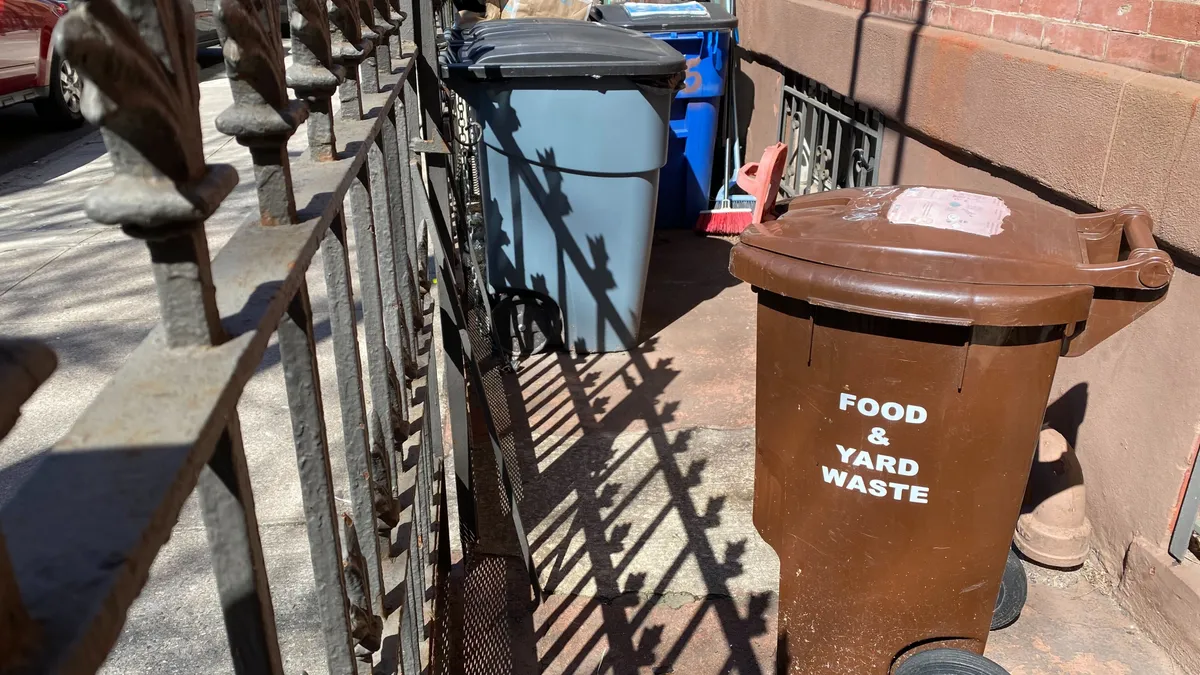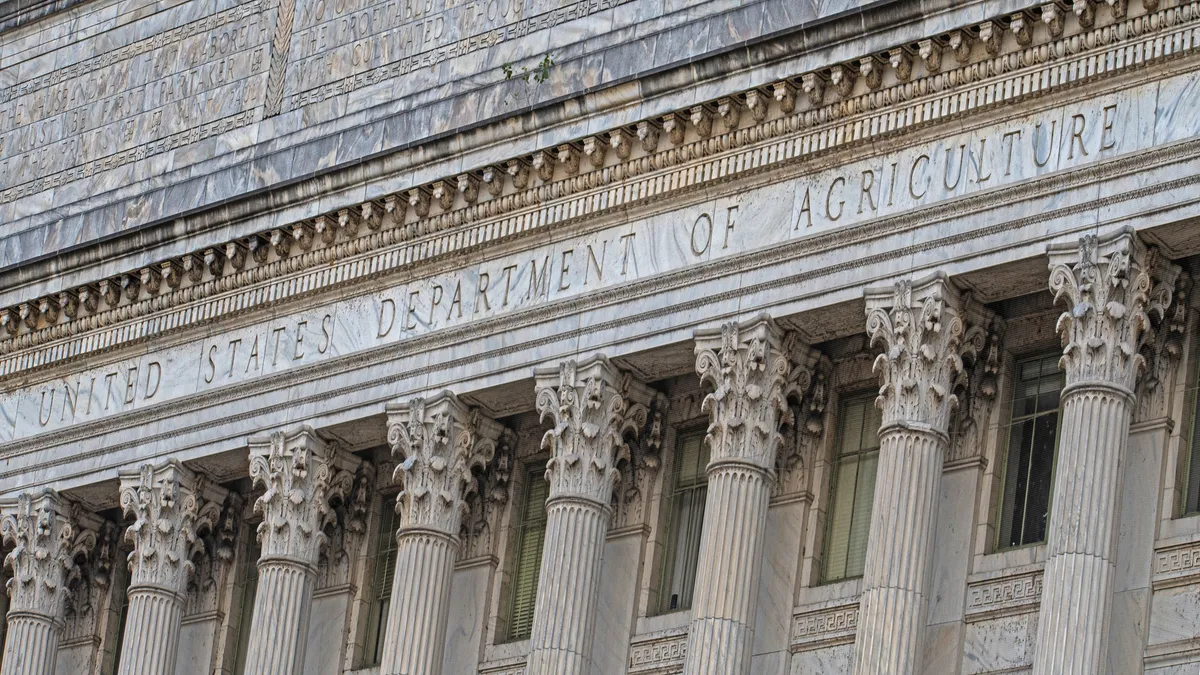The following is a contributed piece and does not reflect an editorial position by Waste Dive. Information on what that entails and how you can submit is available here.
When it comes to addressing climate change, we must pursue a diversity of approaches toward reducing carbon emissions. One of the most overlooked opportunities in our arsenal today is renewable natural gas (RNG).
It's simply not getting enough attention in relationship to its potential for major impact.
RNG is natural gas derived from processing raw biogas, which is produced from industry, agriculture and waste management. The most common source of biogas – which consists largely of methane – is the breakdown of organic waste at wastewater treatment plants and landfills. Methane is at least 28 times more potent than carbon dioxide at trapping heat in the atmosphere, and processing it to make RNG means avoiding those negative effects while also decreasing reliance on fossil fuels.
With RNG, rather than extracting sequestered natural gas from the ground to use as a fuel source, we can repurpose what already exists – creating a "green gas" interchangeable with traditional pipeline-quality natural gas. And RNG acts as a baseload resource when other renewable sources, such as wind and solar, simply cannot.
An immediate benefit of RNG plants is their ability to create new revenue streams for municipalities, farmers and industrial companies that can sell this resource into the natural gas grid. Phoenix and San Antonio are among multiple cities that have already done so. With so many untapped, domestic methane sources, the potential is tremendous.
In the long term, RNG will also contribute to energy security by providing the gas grid with enhanced diversity of supply. This will further diminish the need to import fuel from foreign sources while also building up the onshore RNG industry. There's potential to create thousands of "green collar" jobs in building, operating and maintaining RNG plants.
What's the holdup for adoption? There's limited awareness of RNG's potential and a misconception that RNG is only "sellable" to trucking and transportation. Yet institutions across industries are now using RNG to replace fossil fuel combustion, and some utilities are working to decarbonize their pipelines.
SoCalGas has made a commitment to replace 20% of its traditional natural gas supply with RNG by 2030. A study by Navigant Consulting found replacing 16% of California's natural gas supply with RNG would cut greenhouse gas emissions as much as converting all state buildings to electric-only energy by 2030.
Utilities across the country have also made similar RNG pushes. CenterPoint Energy has proposed offering RNG to its customers in Minnesota, and Summit Utilities is hoping to offer RNG to customers in Maine.
To unlock its full potential, RNG needs a supportive regulatory environment – locally and nationally.
The federal Renewable Fuel Standard (RFS) has driven demand for ethanol-based gasoline and other types of renewable fuels – including RNG. The RFS program has supported the development of the RNG market since 2014, and exponential growth will require a more robust role for RNG in the future. If optimized, RNG could play a massive role in the energy economy; according to the Coalition for Renewable Natural Gas, RNG production from 2015 through 2018 has more than doubled under the RFS.
The RNG industry has experienced an average annual growth rate of 30%; in 2018, RNG production outpaced EPA's projections for the year. At the local level, states can support the RNG market by considering the role of RNG in renewable portfolio standards. These actions combined will allow the U.S. to broadly reap the benefits of RNG in terms of climate change mitigation, revenue generation, energy security and job creation.
Consider how the San Antonio Water System – the first community water system to create a wastewater-to-biogas plant of its kind – benefited. The plant, which processes over 1.5 million standard cubic feet of RNG per day, captures biogas and then sells it through a commercial gas pipeline, generating annual royalties while also removing 19,739 tons of carbon from the atmosphere: the equivalent of the energy expended to heat more than 4,600 homes for a year.
Phoenix, in partnership with its surrounding communities, recently opened the largest wastewater-to-biogas plant in the U.S. The facility is capable of reducing CO2 emissions by 44,671 tons a year – the equivalent of removing more than 9,400 cars from the road annually.
With success like that in mind, it's very clear: it's time to make RNG mainstream.
Michael Bakas is executive vice president of Ameresco.






















